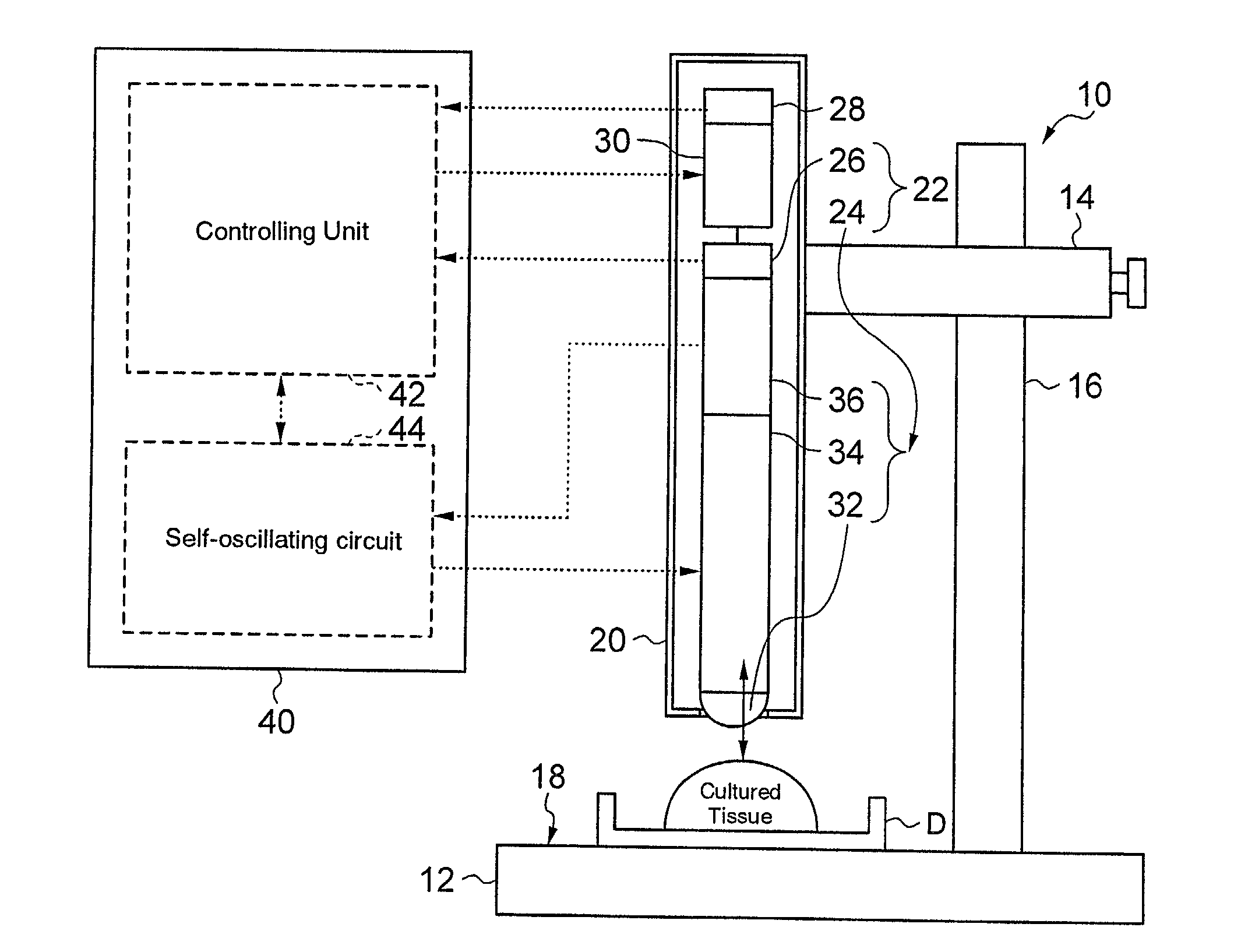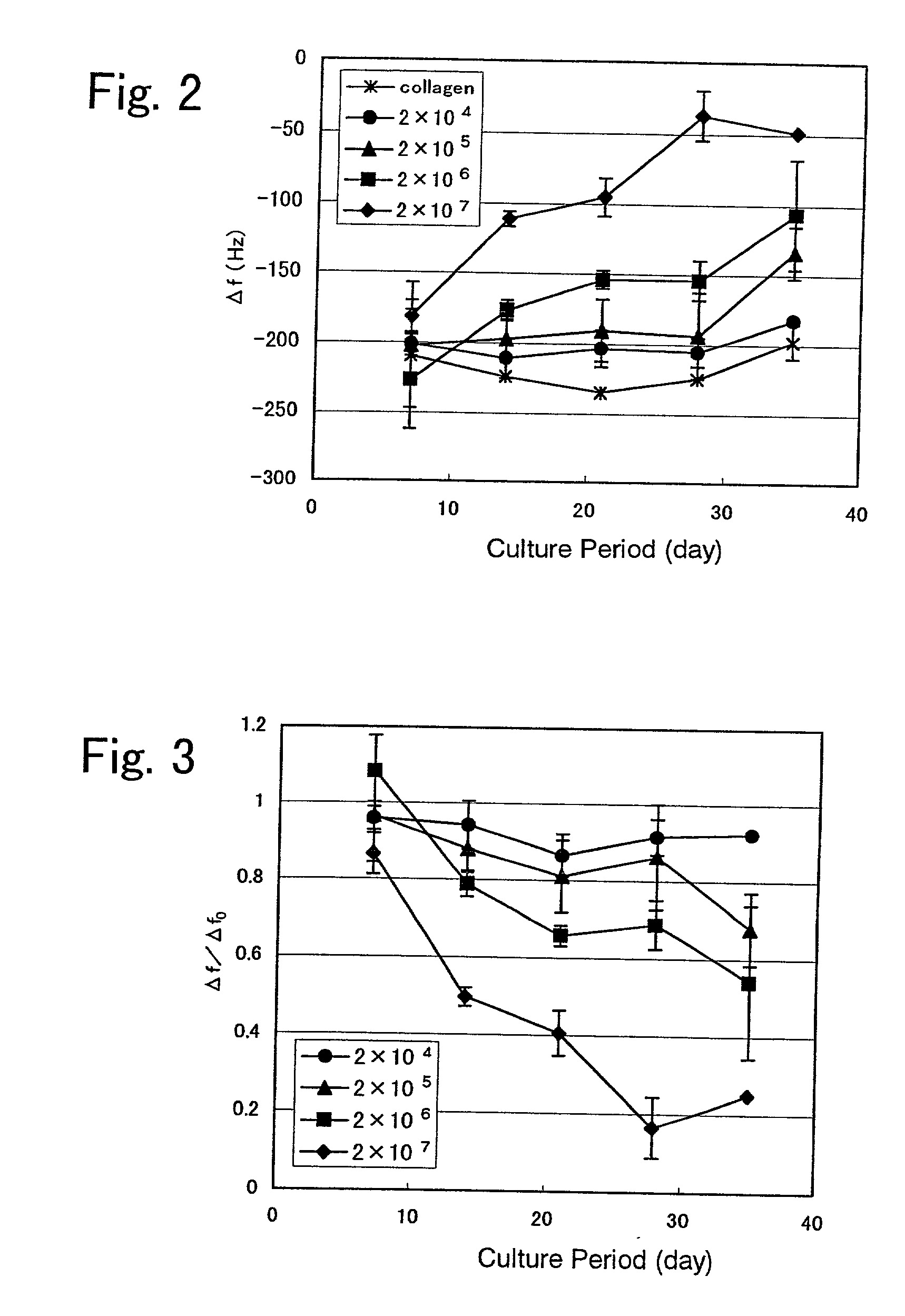Methods for measuring stiffness of cultured tissue, for determining transplant compatibility, for quality control, and for preparing transplant-compatible cultured tissue
a cultured tissue and stiffness technology, applied in the field of measuring the stiffness of cultured tissue, can solve the problems of affecting the quality of cultured tissue, affecting the examination effect of examiners, and requiring a large amount of effort for microscopic observation
- Summary
- Abstract
- Description
- Claims
- Application Information
AI Technical Summary
Problems solved by technology
Method used
Image
Examples
Embodiment Construction
[0095] The invented methods for examination of a cultured tissue based on stiffness information and for quality control based on stiffness information measured over time will be described in further detail with reference to an example using a cultured cartilage originated from chondrocyte. In the present example, the stiffness of the cultured tissue was measured using a biosensor (available from AXIOM CO., LTD.).
Preparation of Cultured Cartilage
[0096] Articular cartilage taken from the knee joint, hip joint and shoulder joint of a Japanese white tame rabbit, was subjected to an enzymatic treatment with a trypsin-EDTA solution and a collagenase solution to thereby separate and recover chondrocyte. The resulting chondrocytes were rinsed, followed by addition of a 10 v / v % FBS (fetal bovine serum)-DMEM (Dulbecco modified Eagle's minimum essential medium) to thereby prepare a cell suspension with a cell density of 1.times.10.sup.7 cell / ml. One part by volume of the cell suspension was m...
PUM
| Property | Measurement | Unit |
|---|---|---|
| diameter | aaaaa | aaaaa |
| velocity | aaaaa | aaaaa |
| diameter | aaaaa | aaaaa |
Abstract
Description
Claims
Application Information
 Login to View More
Login to View More - R&D
- Intellectual Property
- Life Sciences
- Materials
- Tech Scout
- Unparalleled Data Quality
- Higher Quality Content
- 60% Fewer Hallucinations
Browse by: Latest US Patents, China's latest patents, Technical Efficacy Thesaurus, Application Domain, Technology Topic, Popular Technical Reports.
© 2025 PatSnap. All rights reserved.Legal|Privacy policy|Modern Slavery Act Transparency Statement|Sitemap|About US| Contact US: help@patsnap.com



